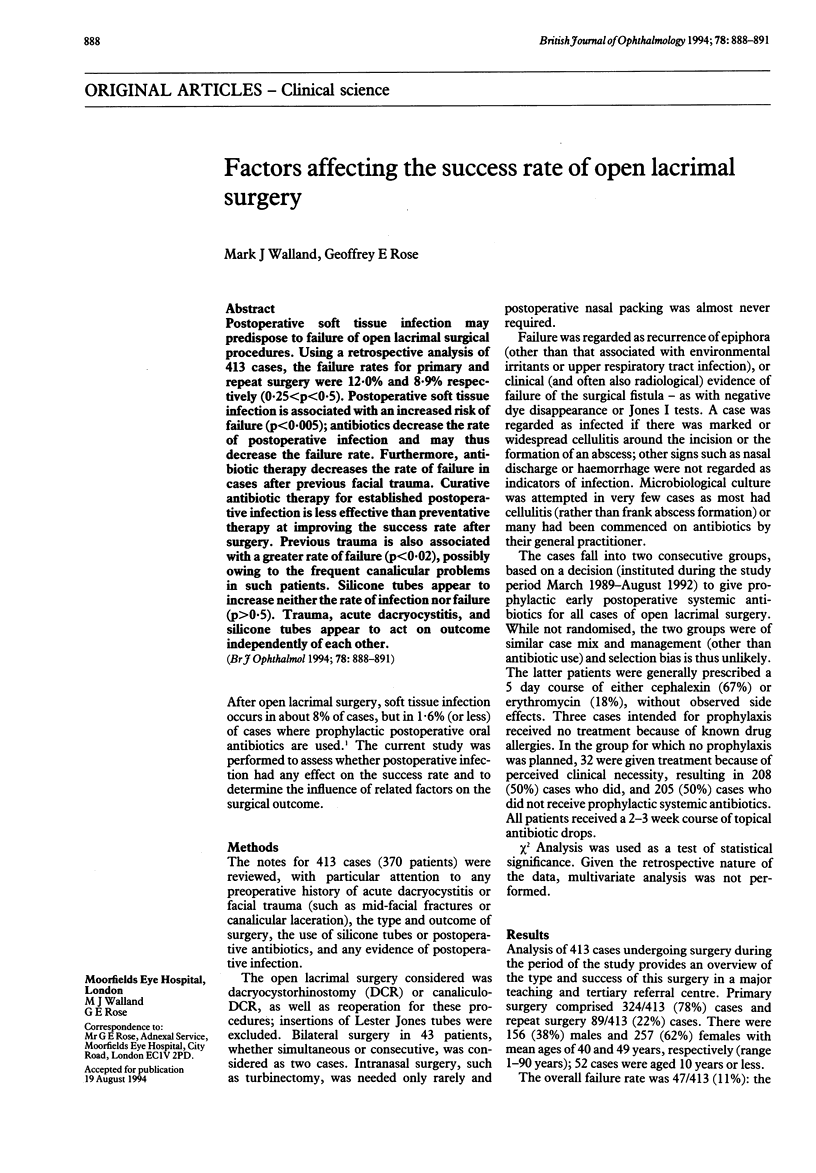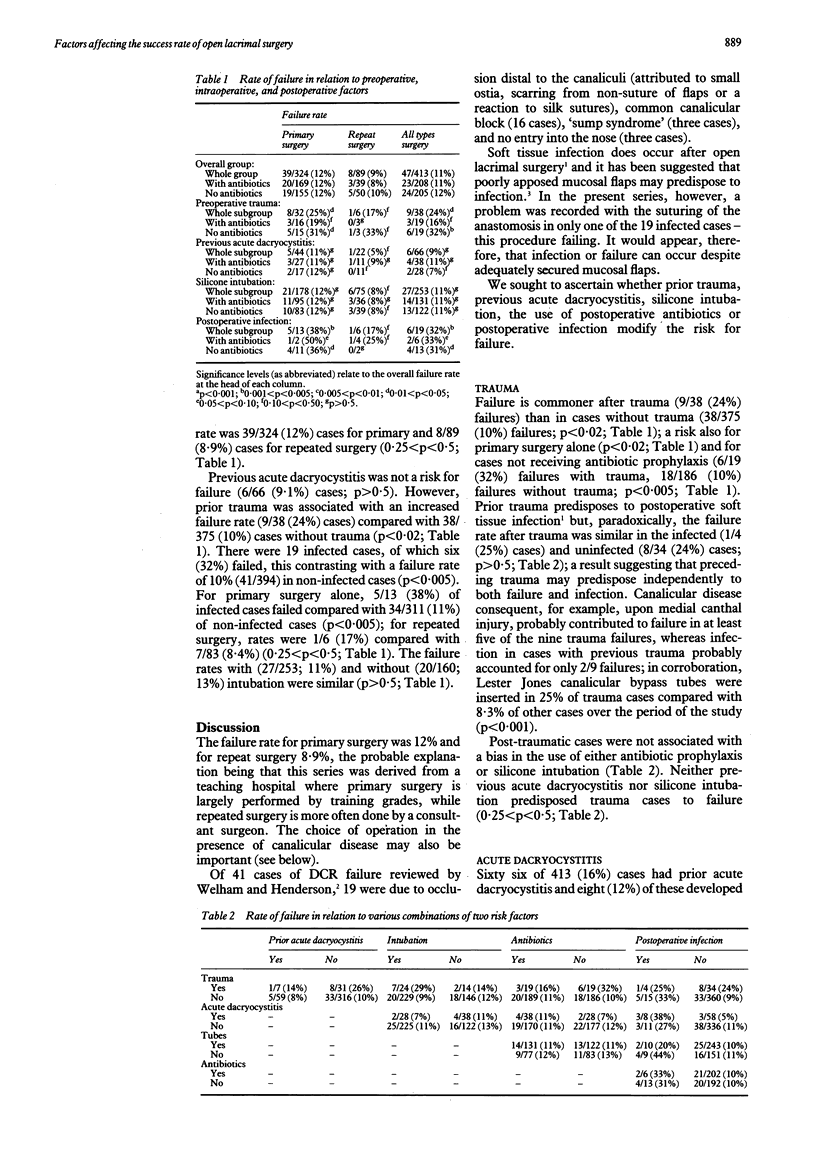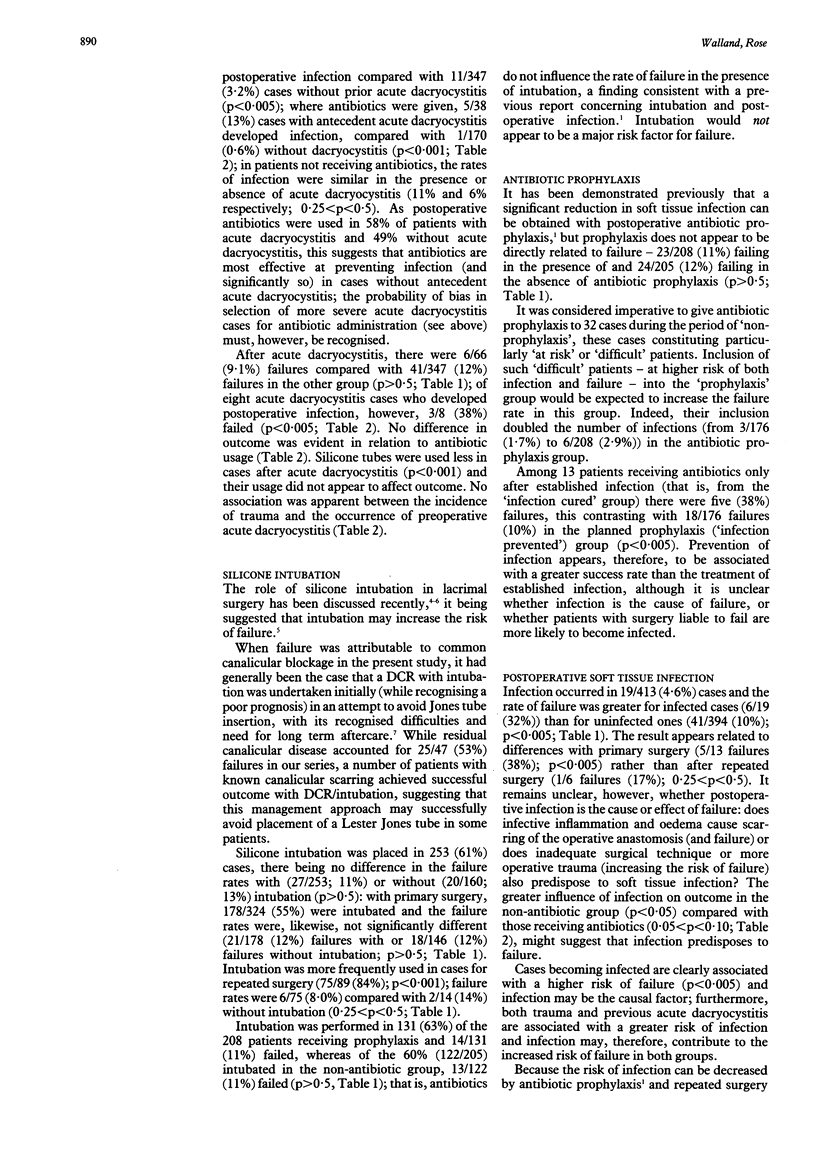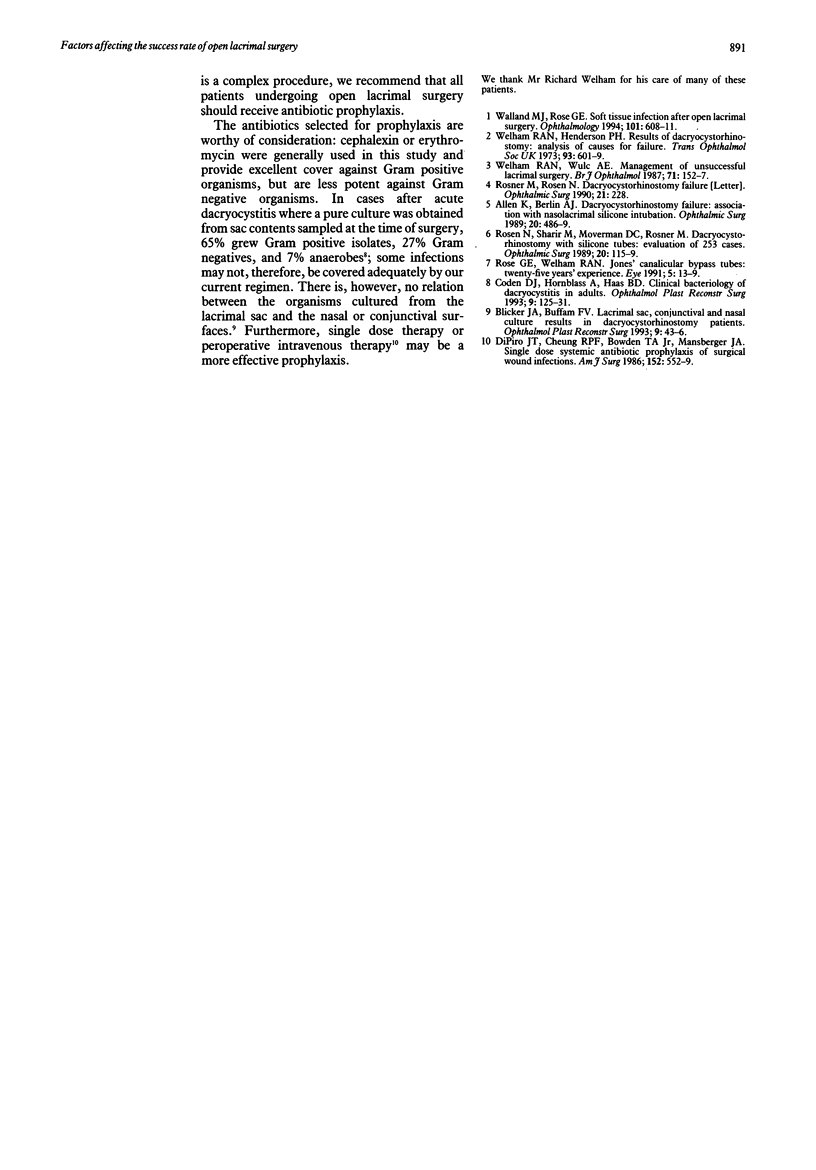Abstract
Postoperative soft tissue infection may predispose to failure of open lacrimal surgical procedures. Using a retrospective analysis of 413 cases, the failure rates for primary and repeat surgery were 12.0% and 8.9% respectively (0.25 < p < 0.5). Postoperative soft tissue infection is associated with an increased risk of failure (p < 0.005); antibiotics decrease the rate of postoperative infection and may thus decrease the failure rate. Furthermore, antibiotic therapy decreases the rate of failure in cases after previous facial trauma. Curative antibiotic therapy for established postoperative infection is less effective than preventative therapy at improving the success rate after surgery. Previous trauma is also associated with a greater rate of failure (p < 0.02), possibly owing to the frequent canalicular problems in such patients. Silicone tubes appear to increase neither the rate of infection nor failure (p > 0.5). Trauma, acute dacryocystitis, and silicone tubes appear to act on outcome independently of each other.
Full text
PDF



Selected References
These references are in PubMed. This may not be the complete list of references from this article.
- Allen K., Berlin A. J. Dacryocystorhinostomy failure: association with nasolacrimal silicone intubation. Ophthalmic Surg. 1989 Jul;20(7):486–489. [PubMed] [Google Scholar]
- Blicker J. A., Buffam F. V. Lacrimal sac, conjunctival, and nasal culture results in dacryocystorhinostomy patients. Ophthal Plast Reconstr Surg. 1993;9(1):43–46. doi: 10.1097/00002341-199303000-00006. [DOI] [PubMed] [Google Scholar]
- Coden D. J., Hornblass A., Haas B. D. Clinical bacteriology of dacryocystitis in adults. Ophthal Plast Reconstr Surg. 1993 Jun;9(2):125–131. doi: 10.1097/00002341-199306000-00008. [DOI] [PubMed] [Google Scholar]
- DiPiro J. T., Cheung R. P., Bowden T. A., Jr, Mansberger J. A. Single dose systemic antibiotic prophylaxis of surgical wound infections. Am J Surg. 1986 Nov;152(5):552–559. doi: 10.1016/0002-9610(86)90228-x. [DOI] [PubMed] [Google Scholar]
- Rose G. E., Welham R. A. Jones' lacrimal canalicular bypass tubes: twenty-five years' experience. Eye (Lond) 1991;5(Pt 1):13–19. doi: 10.1038/eye.1991.3. [DOI] [PubMed] [Google Scholar]
- Rosen N., Sharir M., Moverman D. C., Rosner M. Dacryocystorhinostomy with silicone tubes: evaluation of 253 cases. Ophthalmic Surg. 1989 Feb;20(2):115–119. [PubMed] [Google Scholar]
- Rosner M., Rosen N. Dacryocystorhinostomy failure. Ophthalmic Surg. 1990 Mar;21(3):228–228. [PubMed] [Google Scholar]
- Walland M. J., Rose G. E. Soft tissue infections after open lacrimal surgery. Ophthalmology. 1994 Mar;101(3):608–611. doi: 10.1016/s0161-6420(13)31269-x. [DOI] [PubMed] [Google Scholar]
- Welham R. A., Henderson P. H. Results of dacryocystorhinostomy analysis of causes for failure. Trans Ophthalmol Soc U K. 1973;93(0):601–609. [PubMed] [Google Scholar]
- Welham R. A., Wulc A. E. Management of unsuccessful lacrimal surgery. Br J Ophthalmol. 1987 Feb;71(2):152–157. doi: 10.1136/bjo.71.2.152. [DOI] [PMC free article] [PubMed] [Google Scholar]


